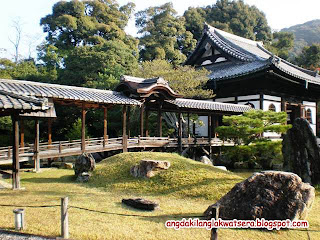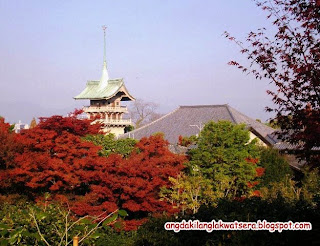Around 2 weeks ago, my friend and travel buddy Lor and I went on a 4-day trip to Vietnam and Cambodia. Because we lacked time, we decided to just go to Saigon in Vietnam and Siem Reap in Cambodia. And since we will be traveling overland, we basically only have 1 whole day to explore each city.
Our first day was spent in Saigon. We arrived at around 1am from Manila and went straight to our hotel by taxi. Since it was already 1am and we were already tired, we just agreed to the $10 per person charge of our taxi. We arrived at our hotel 20 minutes later and hurriedly went to bed to prepare for a full day ahead of us.
Since we only had a day in Saigon, we decided to take a half-day tour to Cu Chi Tunnels and spend the rest of the day exploring Saigon by ourselves. We booked the tour to Cu Chi Tunnels through the travel agency in our hotel and the bus picked us up at around 8am. On the way to Cu Chi, we stopped in a handicrafts shop where you can buy souvenir items. After which, we continued our journey and finally arrived at around 10am. After paying the entrance fees, our guide led us into the location of the tunnels. He showed us the traps created by the Vietcong or the Vietnamese Army and the different "rooms" inside the tunnels. There is also an area where visitors can try firing actual guns for a fee of around $16 for 10 shots. I was hesitant to try at first but glad I did. It was my first time firing guns and I enjoyed it. You can even keep the bullets as souvenirs :D We were also allowed to enter the tunnels (not recommended for claustrophobic people). It is really amazing how the Vietcong were able to build this kind of tunnel system. What's even more amazing is they built this without the use of heavy machines. For me, it's just plain brilliance.
We got back to Saigon at around 2pm, and started walking around the city. Since the "must-see" places in Saigon are all in walking distance to each other, we decided to explore the city on foot. We visited the War Memorial Museum, Reunification Palace, Notre Dame Church and Post Office (which are adjacent to each other), Opera House, Dong Khoi shopping street, Ben Tranh Market, and even the police headquarters. Actually we did not really mean to visit the police headquarters, but we saw this neat looking building and mistaken it for another so we entered the complex. We realized people were looking at us but we kept on taking pictures until a policeman approached us and told us that we were in the police headquarters. Embarrassed, we thought of an excuse and made our way out. hahaha!
Even if we only spent a day in Saigon, I enjoyed exploring the city. The people are friendly, the sights are nice, the food is good and the energy of the city is just great. Crossing the street may be challenging (yes, even more challenging than Manila), but that what makes Saigon unique.
Where we stayed:
Duc Vuong Hotel. $22usd a night for 2 people inclusive of breakfast.
Pros: Clean, safe, cheap, friendly staff, good location (in the backpackers area), travel agency inside hotel. If you arrive past midnight, they can charge you half the price. Overall, good value for money.
Cons: Small room, breakfast is just ordinary, maybe too noisy for some because of the location.
Overall Rating: 3 out of 5
Access to Cu Chi Tunnels:
Booked the tour from the hotel for $6 per pax exclusive of tunnel entrance fee which costs around $5. Bus will pick you up from your hotel and drop you off in your hotel or in the War Remnants Museum located in the city center.
Our Itinerary:
8am: ETD for Cu Chi Tunnels
10am: ETA at Cu Chi Tunnels
10am - 12am: Explore Cu Chi Tunnels (with tour)
2pm: ETA Saigon
2pm - 8pm: Saigon on foot - War Remnants Museum (did not enter anymore due to lack of time), Reunification Palace ($2 entrance fee with English tour guide; make take around 1 hour), Notre Dame Church, Post Office, Opera House, Dong Khoi Street (where we had our early dinner of pho), Ben Tranh Market
Read more...
Since we only had a day in Saigon, we decided to take a half-day tour to Cu Chi Tunnels and spend the rest of the day exploring Saigon by ourselves. We booked the tour to Cu Chi Tunnels through the travel agency in our hotel and the bus picked us up at around 8am. On the way to Cu Chi, we stopped in a handicrafts shop where you can buy souvenir items. After which, we continued our journey and finally arrived at around 10am. After paying the entrance fees, our guide led us into the location of the tunnels. He showed us the traps created by the Vietcong or the Vietnamese Army and the different "rooms" inside the tunnels. There is also an area where visitors can try firing actual guns for a fee of around $16 for 10 shots. I was hesitant to try at first but glad I did. It was my first time firing guns and I enjoyed it. You can even keep the bullets as souvenirs :D We were also allowed to enter the tunnels (not recommended for claustrophobic people). It is really amazing how the Vietcong were able to build this kind of tunnel system. What's even more amazing is they built this without the use of heavy machines. For me, it's just plain brilliance.
We got back to Saigon at around 2pm, and started walking around the city. Since the "must-see" places in Saigon are all in walking distance to each other, we decided to explore the city on foot. We visited the War Memorial Museum, Reunification Palace, Notre Dame Church and Post Office (which are adjacent to each other), Opera House, Dong Khoi shopping street, Ben Tranh Market, and even the police headquarters. Actually we did not really mean to visit the police headquarters, but we saw this neat looking building and mistaken it for another so we entered the complex. We realized people were looking at us but we kept on taking pictures until a policeman approached us and told us that we were in the police headquarters. Embarrassed, we thought of an excuse and made our way out. hahaha!
Even if we only spent a day in Saigon, I enjoyed exploring the city. The people are friendly, the sights are nice, the food is good and the energy of the city is just great. Crossing the street may be challenging (yes, even more challenging than Manila), but that what makes Saigon unique.
Where we stayed:
Duc Vuong Hotel. $22usd a night for 2 people inclusive of breakfast.
Pros: Clean, safe, cheap, friendly staff, good location (in the backpackers area), travel agency inside hotel. If you arrive past midnight, they can charge you half the price. Overall, good value for money.
Cons: Small room, breakfast is just ordinary, maybe too noisy for some because of the location.
Overall Rating: 3 out of 5
Access to Cu Chi Tunnels:
Booked the tour from the hotel for $6 per pax exclusive of tunnel entrance fee which costs around $5. Bus will pick you up from your hotel and drop you off in your hotel or in the War Remnants Museum located in the city center.
Our Itinerary:
8am: ETD for Cu Chi Tunnels
10am: ETA at Cu Chi Tunnels
10am - 12am: Explore Cu Chi Tunnels (with tour)
2pm: ETA Saigon
2pm - 8pm: Saigon on foot - War Remnants Museum (did not enter anymore due to lack of time), Reunification Palace ($2 entrance fee with English tour guide; make take around 1 hour), Notre Dame Church, Post Office, Opera House, Dong Khoi Street (where we had our early dinner of pho), Ben Tranh Market







































































Vancouver